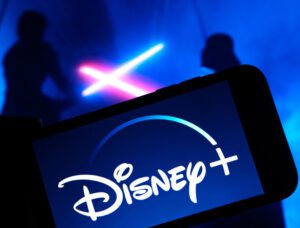 By Kelly Liyakasa, Sarah Sluis and Allison Schiff
By Kelly Liyakasa, Sarah Sluis and Allison Schiff
Update: AT&T has reached a deal to acquire Time Warner for $85.4 billion. The move gives the telco some seriously premium media assets, including HBO, Warner Bros., CNN, Turner Broadcasting and DC Comics.
Yes, AT&T will own Batman.
While the telco got a distribution outlet when it merged with DirecTV last year, it really hadn’t bought any content properties, save for a digital video joint venture with The Chernin Group through Otter Media (which has a majority stake in the multichannel network Fullscreen).
While rival telco Verizon has invested in content – it owns AOL’s pubs and built a video portal called Go90 – Time Warner blows those media offerings out of the water.
The acquisition of Time Warner is about acquiring the best content assets in the business, said Bruce Leichtman, president and principal analyst at media, entertainment and broadband research consultancy Leichtman Research Group.
“This is no niche internet content,” he said. “This isn’t about mobile video. This is real, live, traditional TV and entertainment. This would turn a wireless company losing grip with consumers in the home into much more of a media company akin to Comcast and NBC.”
Only Comcast/NBCUniversal and The Walt Disney Co. would rival Time Warner in its breadth of media holdings.
A combined AT&T-Time Warner entity would be even more powerful when one considers AT&T’s distribution – which includes DirecTV.
“It’s clear from the Netflix model how powerful content and distribution are together,” said Jim Nail, a principal analyst at Forrester. “It’s not any sort of boardroom brilliance for any of these companies to say, ‘Let’s buy some content,’ and [get out of the] standalone satellite or distribution businesses.”
Cross-overs
Time Warner’s content assets could also create more cross-selling potential for AT&T’s ad business.
One media exec familiar with the Time Warner portfolio noted that AT&T would be buying – besides a deep content library – “one of the best sales teams in the marketplace.” And in a recent interview with AdExchanger, the president of AT&T’s addressable ads unit, AdWorks, called “targeted, more audience-based advertising” a key area of emphasis.
The cross-device implications of an AT&T/Time Warner hookup are also clear: massive reach, distribution and data. It claims to have 141.8 million wireless customers in the US and Mexico, 15.6 million internet connections and 45.5 million video connections across DirecTV and U-verse.
“It’s a significant audience, especially when you bring DirecTV into the mix, being able to use that data and that deterministic linking for more relevant messaging across all of those different sources, both owned-and-operated, and being able to take that outside of O&O across multiple channels and screen,” said Adelphic CEO Michael Collins.
Both AT&T and Time Warner have deterministic user data across a wide array of channels.
“They have it through DirecTV, they have it through AT&T’s ISP and AT&T’s television service and they have it through Time Warner’s wide distribution,” Collins said. “That’s sticky content and a very broad audience, and it’s all done on a deterministic basis, which makes it pretty powerful. I don’t know if you’d say it’s unique, but it’s certainly highly differentiated.”
AT&T is already schooled in the ways of cross-device.
Its privacy policy very clearly states that it uses both Tapad and Drawbridge “to establish connections between a user’s devices and to provide behavioral targeting across devices,” noting that “cross-device connections allow AT&T to understand that a single user is accessing AT&T services from multiple devices, and to synchronize content and advertising messages across those devices.”
It’s only logical that AT&T will take its cross-device program to the next level with Time Warner on board.
“One would have to imagine that Time Warner and AT&T are looking to bring content and distribution together for seamless distribution and content across screens,” Collins said. “But marketing and advertising are evolving as well, and the potential combination of Time Warner and AT&T would give them knowledge, insight and the ability to deliver highly relevant advertising on behalf of advertisers.”












